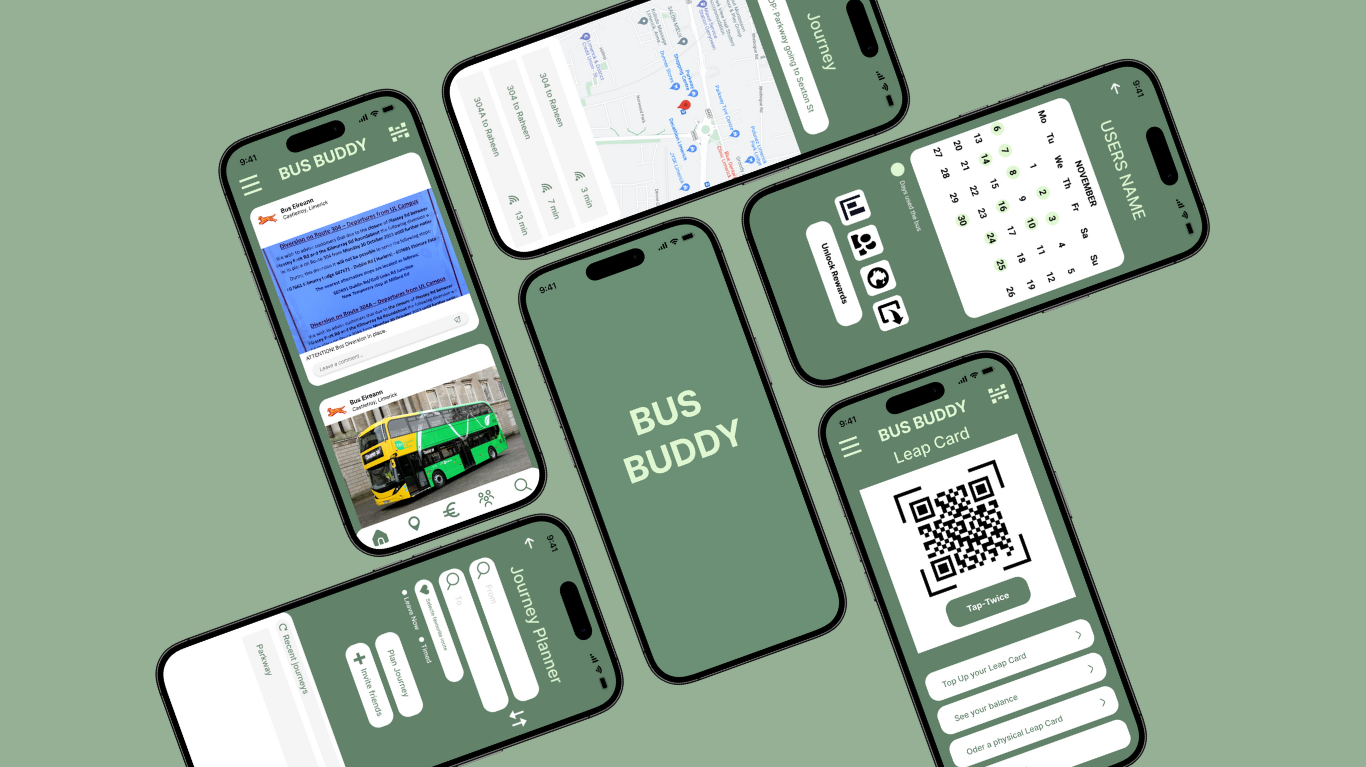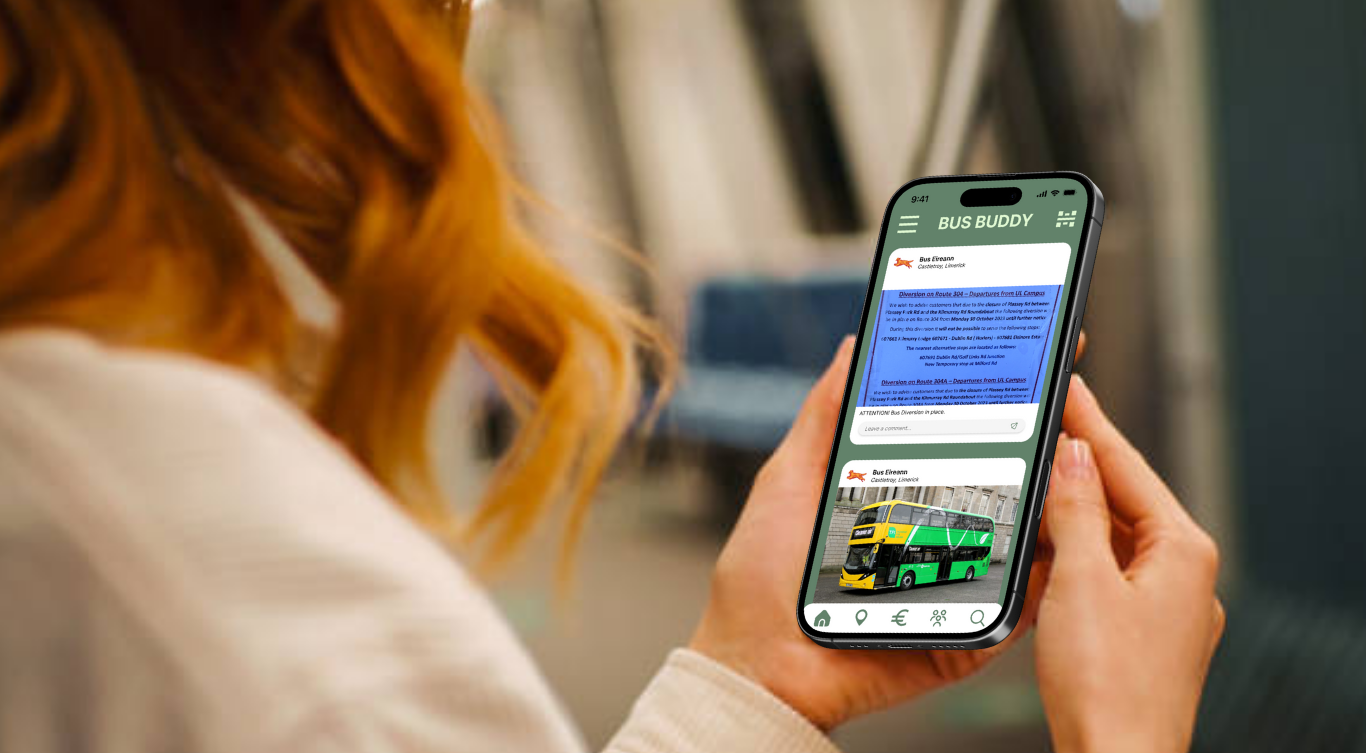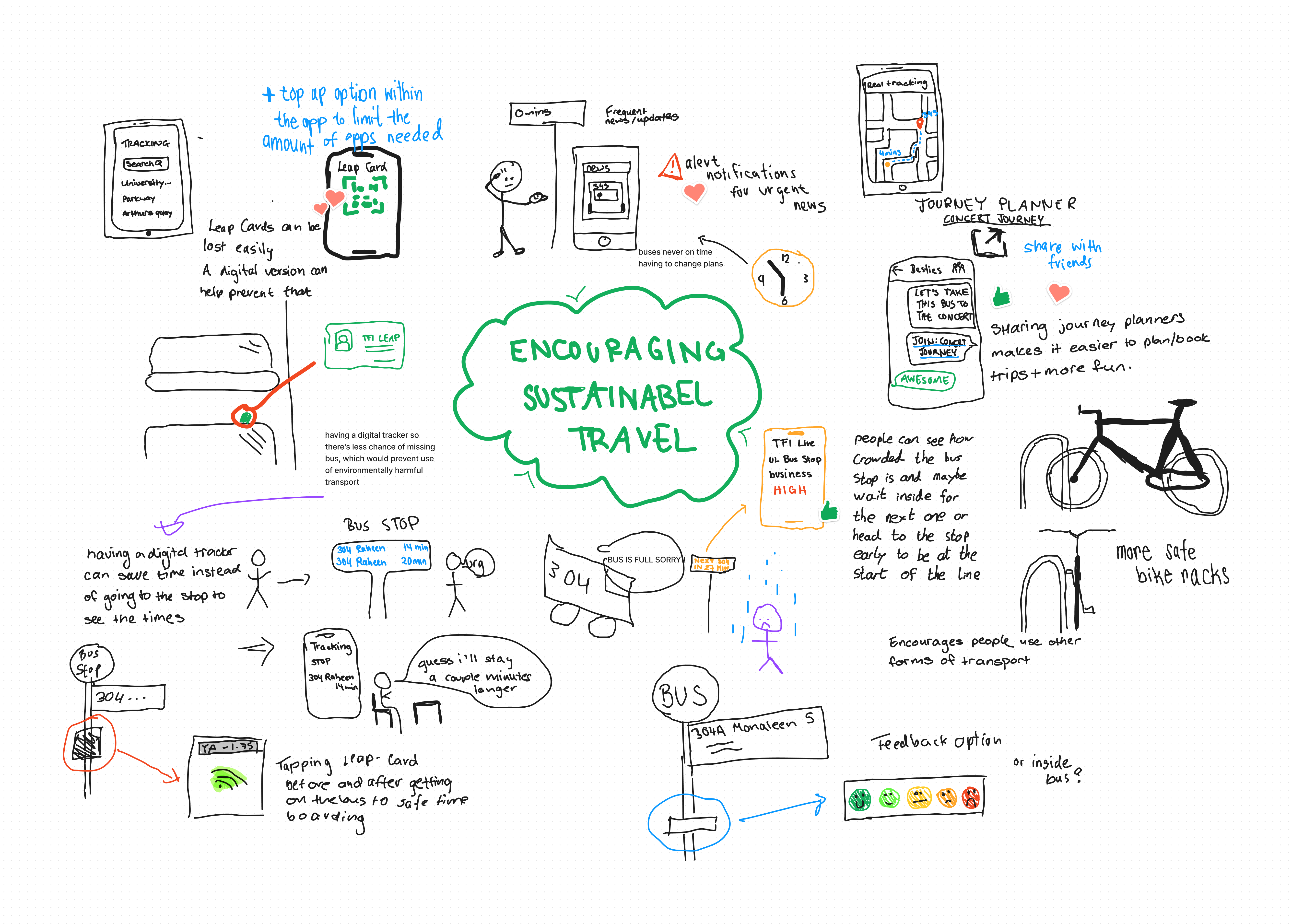BusBuddy

BusBuddy was developed as part of my Design Research in Practice module. Working with a team, we focused on "Designing for Sustainable and/or Active Travel to Campus." Our project aimed to enhance the public transport experience for students, making it a more appealing and sustainable travel option.
What is BusBuddy?
BusBuddy is a mobile application designed to improve the usability of digital products related to public transport and provide a streamlined channel for user feedback. It aims to make bus travel more convenient, transparent, and enjoyable, ultimately encouraging more individuals to choose public transport over private vehicles.

What problems does it solve?
Our research revealed key pain points for public transport users, particularly concerning communication and feedback. Many users felt there wasn't an effective way to provide feedback to transport providers (TFI). Additionally, the existing digital tools implicated in public transport often lacked intuitive interfaces or comprehensive features. BusBuddy addresses these issues by providing a clear and easy-to-use platform for users to submit feedback and report issues directly to TFI, improving the overall usability and functionality of public transport-related digital interfaces, making essential information more accessible and offering features that enhance the user experience, such as live tracking, alerts, and detailed information about bus stops and routes.

Sketching ideas for the "Designing for Sustainable and/or Active Travel to Campus" challenge
My reflection on the project
This project reinforced the critical role of thorough research in the design process. By conducting interviews and observations, we gained invaluable insights into the real struggles and needs of public transport users. This user-centric approach was fundamental in shaping BusBuddy's features and ensuring it addressed genuine problems. Collaborating within the team allowed for diverse perspectives and a richer ideation process, leading to a more robust and user-friendly concept. It was rewarding to apply the OPN framework to analyse our data, which guided our design decisions and ensured our solutions were directly tied to user needs.
View my complete project, including research and interviews, in the Process Book and Poster below: